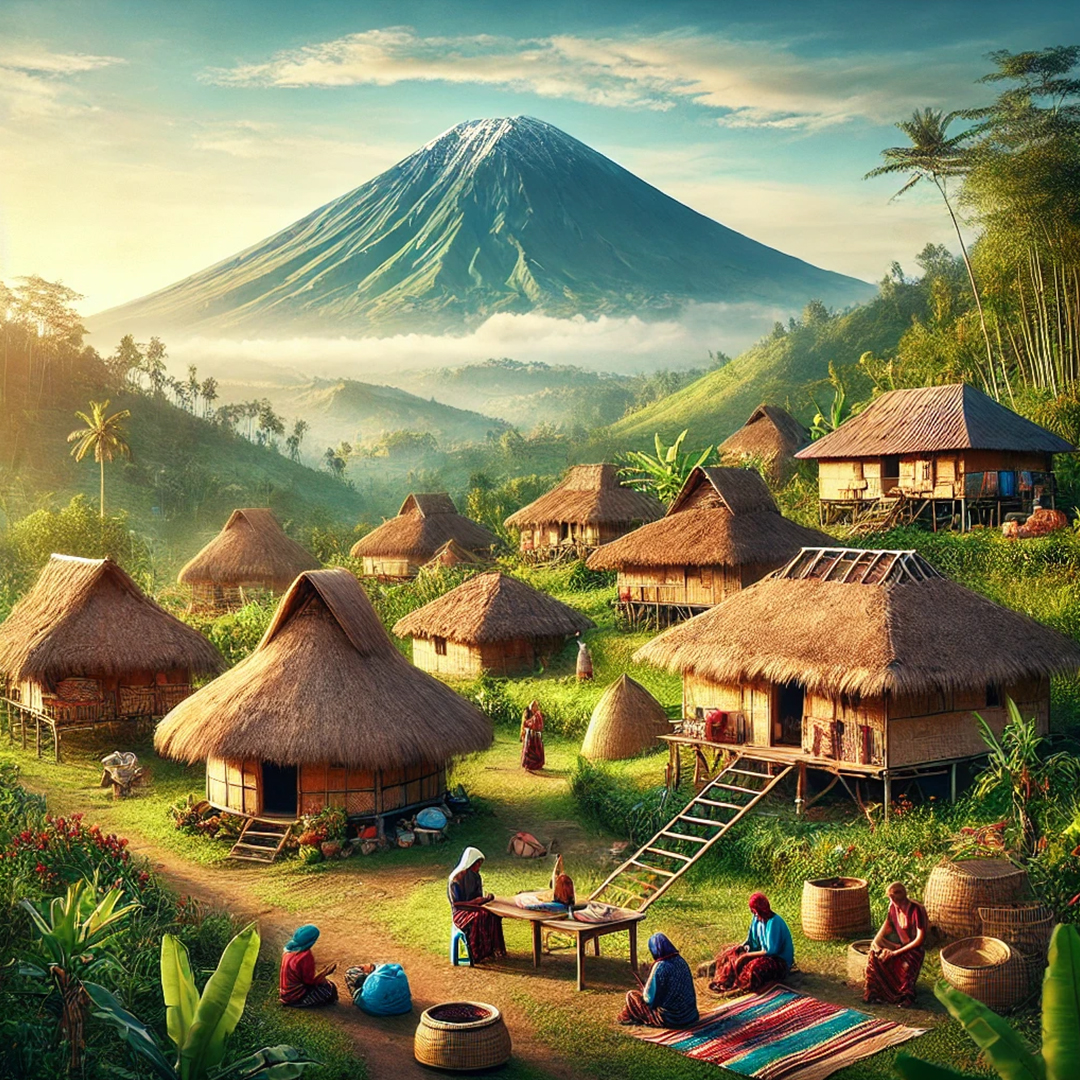North Lombok is not only home to stunning beaches and majestic mountains but also to a rich cultural heritage that thrives in its hidden villages. These secluded communities offer a rare glimpse into the island’s indigenous traditions, unique architecture, and harmonious way of life. For travelers eager to connect with Lombok’s cultural roots, the hidden villages of North Lombok provide an immersive experience that is both enlightening and unforgettable.
Bayan Village
Bayan is one of the most well-known traditional villages in North Lombok and serves as a gateway to the island’s indigenous Sasak culture. Here, life revolves around ancient traditions passed down through generations.
- Highlights:
- Visit the Masjid Bayan Beleq, one of the oldest mosques in Lombok, with its unique architecture of bamboo and thatched roofs.
- Engage with the local Sasak community and learn about their customs, such as traditional weaving and farming techniques.
- Participate in local ceremonies or festivals if your visit coincides with one.
Senaru Village
Nestled at the base of Mount Rinjani, Senaru Village is not only the starting point for trekkers but also a cultural treasure.
- Highlights:
- Discover the Sasak way of life by exploring traditional homes and interacting with the villagers.
- Learn about the community’s connection to Mount Rinjani, considered sacred by the locals.
- Explore nearby natural attractions like the Sendang Gile and Tiu Kelep waterfalls.
Segentar Village
Segentar is a lesser-known village that offers an authentic and untouched experience of Sasak culture.
- Highlights:
- Witness daily life in a traditional setting, from weaving to cooking over open fires.
- Enjoy the village’s serene environment, surrounded by lush greenery and rolling hills.
- Participate in local workshops to learn traditional crafts.
Gondang Village
Located near the coast, Gondang Village combines cultural immersion with scenic beauty.
- Highlights:
- Explore traditional Sasak houses made of bamboo and clay.
- Join locals in farming activities and learn about sustainable agricultural practices.
- Enjoy the village’s proximity to the coastline, with opportunities for a scenic walk or picnic.
What to Expect
Visiting these hidden villages is like stepping back in time. The communities are deeply rooted in tradition, and their way of life reflects a strong connection to nature and spirituality.
- Architecture: Houses are typically constructed from natural materials like bamboo, wood, and thatched palm leaves.
- Customs: Ceremonies, dances, and rituals are integral parts of life in these villages.
- Hospitality: Visitors are welcomed warmly and encouraged to learn about the local culture.
How to Get There
The hidden villages of North Lombok are accessible by car or motorbike from Mataram or Senggigi. While some villages like Bayan and Senaru are relatively easy to find, others may require guidance from locals or tour operators to locate.
Best Time to Visit
The best time to visit these villages is during the dry season, from May to October. This period ensures favorable weather for exploring both cultural and natural attractions.
Tips for Visiting
- Respect Local Customs: Dress modestly and follow village etiquette to show respect for the community.
- Engage with Locals: Take the time to talk to villagers and learn about their lives and traditions.
- Support Local Crafts: Purchase handmade items like textiles and pottery to support the local economy.
Conclusion
The hidden villages of North Lombok are more than just destinations; they are living museums of culture and tradition. From the historic Bayan Village to the tranquil Segentar Village, each community offers a unique opportunity to experience the heart and soul of Lombok. For those seeking meaningful travel experiences, these villages provide an enriching journey into the island’s cultural heritage.
